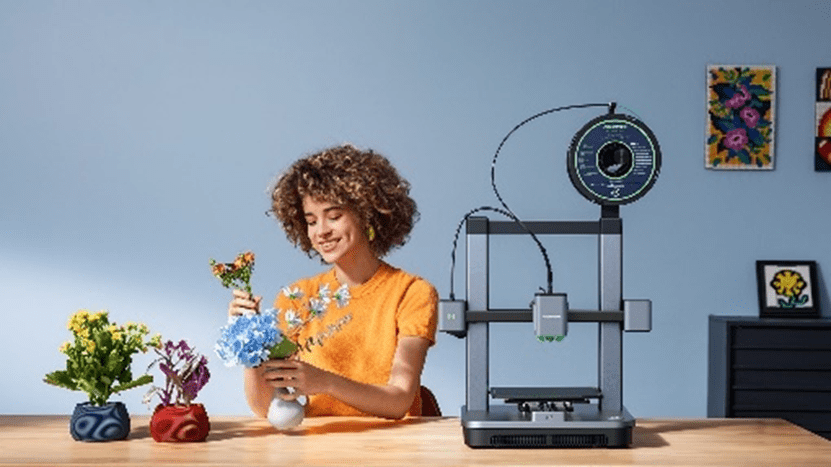Tech
Crafting Creativity: 5 Must-Have Features for a 3D Printer Perfect for Designing Masterpieces

In the design world, where creativity knows no bounds, having the right tools can make all the difference. For designers, architects, and artists, a 3D printer is not just a device; it’s a gateway to turning imagination into tangible reality. When choosing the perfect 3D printer for designing, certain features stand out as essential. Moreover, a 3D printer’s compatibility with diverse materials emerges as a crucial factor, empowering designers to experiment with a spectrum of filaments and materials, adding layers of texture and complexity to their designs. Let’s look at the five must-have features that transform a 3D printer into a creative powerhouse.
1. Precision and Detailing Capabilities
At the heart of any designer’s dream 3d printer lies precision. The ability to translate intricate digital designs into physical objects with utmost accuracy is non-negotiable. High-resolution printing ensures the final product reproduces every curve, line, and detail. Look for printers with fine layer resolution and advanced nozzle technology to achieve the level of detailing necessary for intricate designs. This feature is crucial for architects and product designers who demand precision in their prototypes.
2. Diverse Material Compatibility
Designers often work with various materials to bring their visions to life. A versatile 3D printer should be able to handle different materials, from basic PLA to advanced filaments like ABS, PETG, and even flexible materials like TPU. The ability to experiment with various materials opens up new possibilities for designers, allowing them to explore different textures, finishes, and physical properties in their creations. Additionally, the printer should support multi-material printing, enabling designers to combine various materials in a single print job for added complexity.
3. Large Build Volume
Limitations on print size can be a major hindrance for designers with grand ideas. A spacious build volume provides the freedom to create larger prototypes and intricate designs without splitting them into smaller parts. This feature is especially crucial for architects working on scale models or artists envisioning oversized sculptures. A 3D printer with a generous build volume empowers designers to think big and turn their ambitious concepts into tangible masterpieces.
4. User-Friendly Software and Interface
Designers may only sometimes be tech experts, and a 3D printer’s ease of use can significantly impact the creative process. A user-friendly interface and intuitive software are essential for seamless operation. Look for printers with user-friendly slicers, allowing designers to prepare and optimize their models for printing without a steep learning curve. Remote monitoring and control features also enhance convenience, letting designers keep an eye on their prints even when they are not physically present in the workspace.
5. Reliability and Consistency
Consistency is key in design; a reliable 3D printer is a designer’s best companion. The printer should deliver consistent results over time, ensuring that each print is as precise as the last. Features like auto-bed leveling and filament sensors contribute to a smoother printing experience, reducing the likelihood of errors and ensuring that the final output matches the designer’s expectations. Reliability is about providing artists the confidence to stretch the limits of their creativity.

Conclusion
3D printers designed for creativity must combine precision, versatility, spaciousness, user-friendliness, and reliability. These features empower designers to explore new craft dimensions, turning digital dreams into tangible realities. As technology advances, the perfect 3D printer for designing is not just a tool; it’s a partner in the creative journey, bringing ideas to life with unparalleled accuracy and flair. Choose wisely, and watch your designs evolve from concepts on a screen to breathtaking works of art in the physical realm.

-

 Health5 years ago
Health5 years agoAdvantages and Disadvantages of Milk
-

 Tech4 years ago
Tech4 years ago6 Tips to Improving E-Commerce Websites
-

 Home5 years ago
Home5 years agoAdvantages and Disadvantages of Village Life in Points
-

 Travel5 years ago
Travel5 years agoAdvantages and Disadvantage of Travelling
-

 Sports3 years ago
Sports3 years agoThe benefits of playing an online live casino
-

 Tech5 years ago
Tech5 years ago10+ Advantages and Disadvantages of Mobile Phones in Points
-

 Tech5 years ago
Tech5 years agoEssay on Advantages and Disadvantages of Offline Shopping
-

 Tech5 years ago
Tech5 years ago8+ Advantages and Disadvantages of Motorcycle |Having Bike